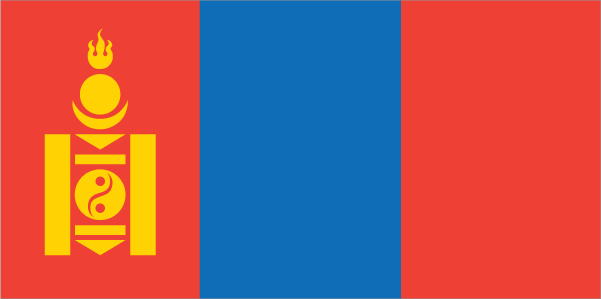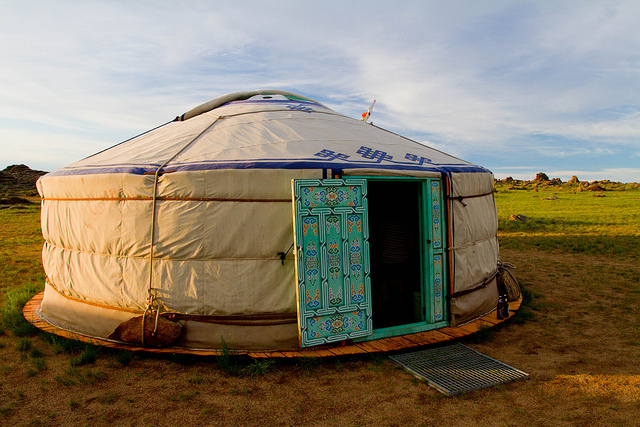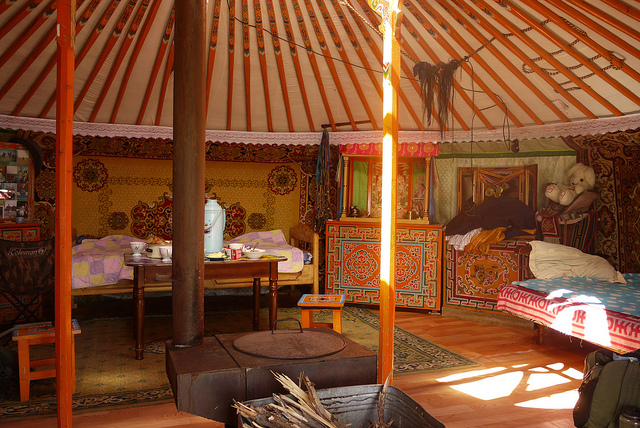Last updated on April 18th, 2022
Mongolia is a country in East Asia. The country is also famous for Genghis Khan, a one of a kind ruler that changed the course of history for the country. With these 66 facts about Mongolia, let’s learn more about its history, culture & tradition, economy, geography, people and lots more…
Geographical facts about Mongolia
1. Mongolia is a landlocked, unitary sovereign state in East Asia.
2. Bogd Khan Ull National Park (1783), the oldest national park in the world, is in Mongolia. It predates the Yellowstone by approximately 100 years.
3. Present day Mongolia was referred to as “Outer Mongolia.” Inner Mongolia is an autonomous region in The People’s Republic of China, located in the north of the country. Inner Mongolia contains over 12% of China’s land area and is the third largest subdivision of China.
4. Mongolia lies between China to the South and Russia to the North. It is actually bordered on the three sides (South, East, and West) by China. Kazakhstan is also near to Mongolia at only a distance of 36.76 km.
Map of Mongolia
5. With a population of around 3 million people, Mongolia, by area is the 18th largest country in the world.
6. Behind Kazakhstan, Mongolia is the world’s second-largest landlocked country, followed by Chad (3rd), Niger (4th), Mali (5th), Ethiopia (6th), Bolivia (7th), Zambia (8th), Afghanistan (9th) and Central African Republic (10th largest landlocked country in the world).
7. With an average temperature of minus 1.3 degree Celsius, Mongolia’s capital Ulaanbaatar (“Red Hero”) is the world’s chilliest capital city. The second coldest capital city in the world is Astana in Kazakhstan with an average annual temperature of 3.5 degree Celsius.
8. Mongolia is the world’s most sparsely populated country. It has a land area of 1.6 million km and a population of 3 million.
9. With an average altitude of 1580 m above sea level, Mongolia is one of the highest countries in the world.
10. The highest point of the country is “The Khuiten peak” at 4374 m on the west side of the country along the border with China. It is known as “Youyi Feng” in Chinese and “Nairamdal Uul” in Mongolian. The peak was first ascended in 1963 by Mongolian mountaineers sponsored by the government. It was known as “Friendship Peak” in the past.
11. The lowest point is The Hoh Nurr lake at 560 m. See the list of highest and lowest points of countries here.
12. The Potanin Glacier, which is 14 km long, is the longest glacier in Mongolia.
13. Almost 3/4th of Mongolia’s land area is pastureland, which supports the lives of its grazing livestock.
14. Mongolia is prone to earthquakes some of whom are severe in nature. However, due to low population density, the earthquakes do not cause any major harm.
15. Mongolia has three mountain chains: the Khangai Mountains, the Khentii Mountains and the Mongolian Altai Mountains (the highest of the three ranges).
16. Mongolia does not have direct contact with an ocean. In fact, the nearest ocean to the country is the Pacific Ocean. However, Mongolia has several lakes that collectively cover an area of 16,003 kilometer square.
17. Ulaanbaatar, the capital city of Mongolia used to move three times a year (being a nomadic city). Mongolia became a member of the World Trade Organization in 1997.
18. Genghis Khan, born in 1162, formed the Mongol Empire in 1206. The Mongol Empire is also the largest contiguous empire in world history. The empire covered 22% of the Earth’s total land area. However, after the demise of Genghis Khan, the empire was divided into four kingdoms.
Flag of Mongolia

Facts about Mongolian culture and tradition
19. The country is famous for its nomadic lifestyle and traditions. The country is one of the last nations in the world to have such a high proportion of nomads among its population.
20. Airag is the traditional national drink of Mongolia. It is essentially mare’s fermented milk. This fermented milk has several benefits for health and the digestive system. The social and cultural value of the drink is similar to that of the wine in France. Learn more about Airag here.
21. Pointing fingers and talking in a raised voice is considered rude in Mongolian culture.
22. Standing or speaking on the threshold of the door in Mongolia is taboo, and so is lighting up a cigarette from a candle.
23. Goat, sheep, cattle, camel, and horse are the five main types of stock that nomads of the region raise and breed for a living. These nomads move from place to place in search of the most favorable campsites and pastures.
24. Mongolians love children and this is why their average family has 4 children. A mother of five is awarded in the country as “Honored Mother“.
25. Use of right hand or both the hands while giving something to elders is considered polite.
26. “Naadam” is an annual traditional festival in Mongolia which is celebrated between 11th and 13th July.
27. In Mongolia, it is a practice to shake hands when someone accidentally touches you with their feet. It is a way of apologizing for the mistake.
28. Hospitality plays a significant role in the Mongolian culture. Guests are generally served with a bowl of Airag (Mongolia’s national drink). The guest is expected to take a sip or drink the entire bowl but not refuse the drink as it is considered gravely #impolite.
29. Freedom of worship is a key element of the lives of the Mongols.
30. Singing while riding a horse is quite popular in the country. Horse riders use a technique known as “Throat Singing” also known as “Khoomi Singing”. Singers use their throat and nose to produce two different sounds at the same time.
31. Music is used to express emotions for loved ones, horses, nature and the land. The traditional “Long Song” is a great tool for this purpose. It is a Mongolian classical form of singing in which each syllable of the text is extended for a long duration. Much to your surprise, a Long Song of 4 minutes in length may contain only 10 words while others may be up to 3 hours long.

32. Mongolian traditional homes – “the Ger or Yurt” are also a part of their national identity. The Ger is also referred to as the White Pearl of the Steppe. The door of the Ger always faces south, because the wind mostly blows from North and Northwest.

33. After the death of Genghis Khan, Buddhism became a dominant religion. Today, Buddhism is a wide-spread religion in the country and the inhabitants adhere to Tibetan Buddhists teachings.
34. The Dalai Lama is a key figure in the country and has visited Mongolia several times.
35. Mongolians are uncomfortable about homosexuality or same-sex relationships. However, the practice is not illegal in the country.
36. Mongolians worshiped the blue skies. They considered the sky as their father, and earth as their mother. Due to the fact that the civilization was dependent on the forces of nature, they worshiped the various elements of nature.
37. Mongolian wrestling, also known as Bokh, is the folk wrestling style of Mongolia. This form of wrestling is prevalent since the time of Genghis Khan who used the sport to keep his army in good shape and form. This sport is also a part of the national independence celebration – Naadam.
38. In Khalkha style, touching the ground with anything other than the foot loses you the match. Winners of the fight are also given awards depending on the number of fights they have won in succession.
Food in Mongolia
39. Due to certain geographical limitations, spices are not grown in the country. Traditional Mongolian foods are non-spicy mild foods. Various international cuisines are also consumed in the country but mainly in the capital or major settlements.
40. During the summer season, locals eat more of dairy products than meat. They also focus on consuming more drinks than solid foods, which helps quench their thirst.
41. Vodka is a popular drink in the country. It is considered rude to not have a drink with your host when offered by them.
42. Meat and dairy products constitute the diet of the Mongolians. Because this is what is primarily available in the country for decades and is good for health as well.
Continue reading on the next page…
